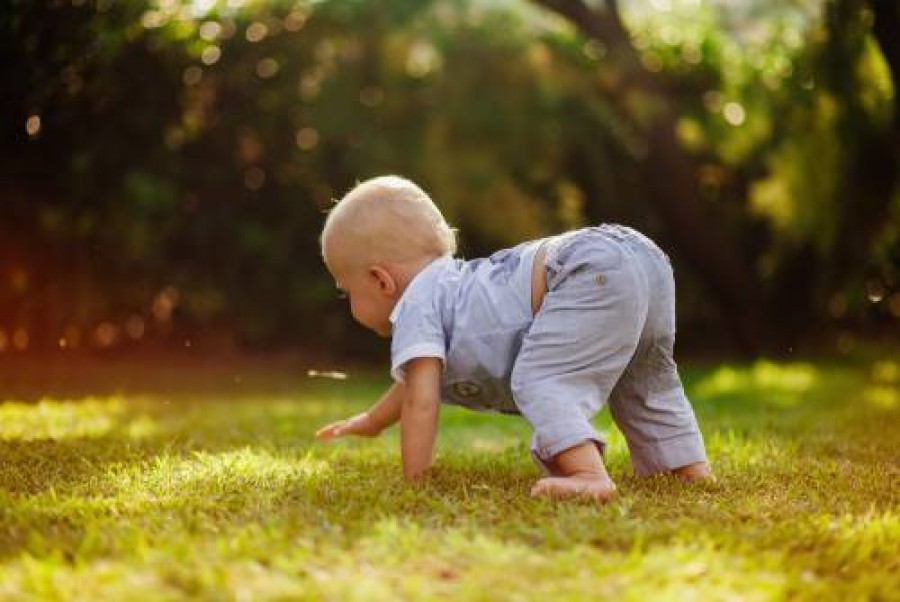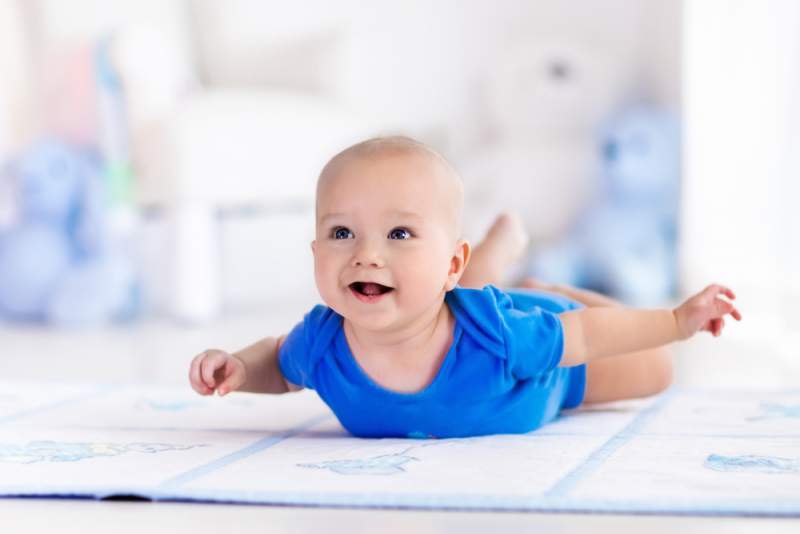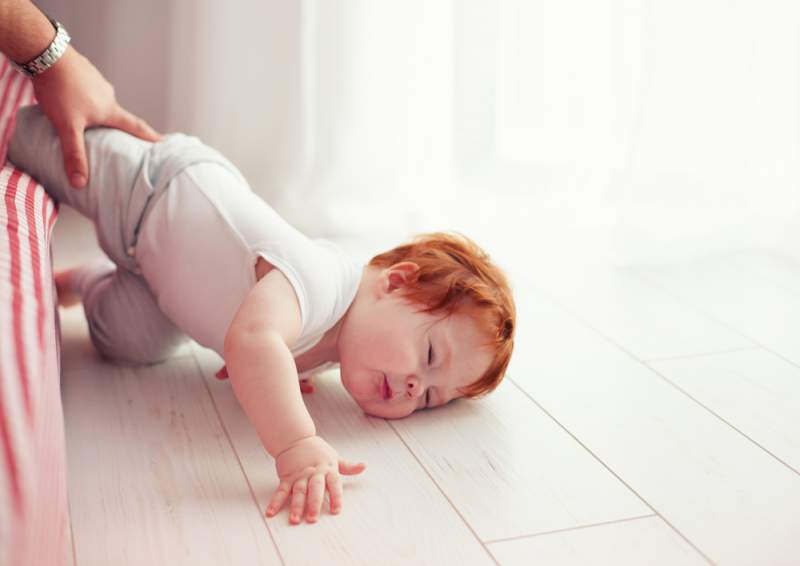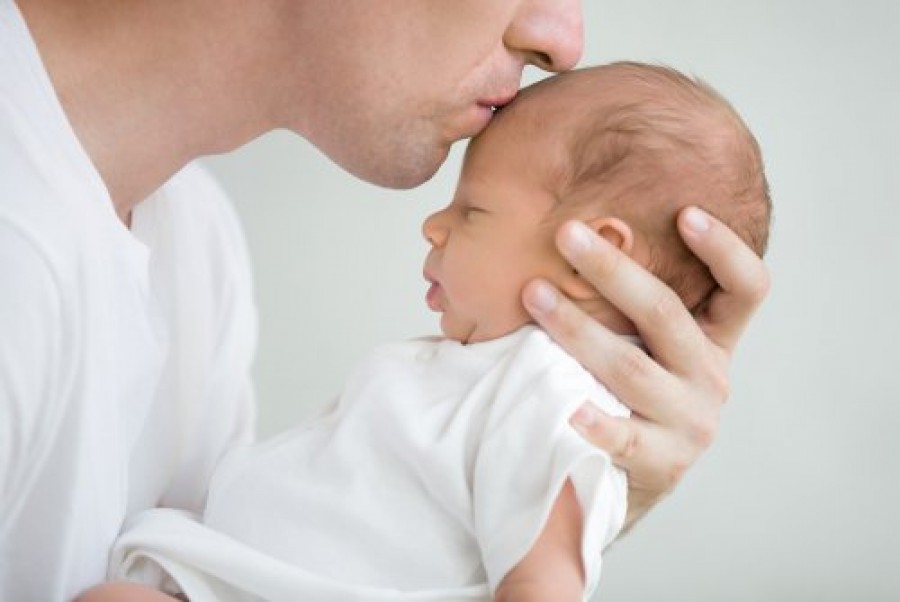Learning to Crawl

It’s always exciting when your baby learns a new skill – although when that skill is crawling some parents might not be so relieved!
Crawling means your baby is on their way to toddler-hood, which also means you’ll need to keep a much more watchful eye over what they get up to. Crawling is a crucial part of your babies mobility development but it doesn’t happen overnight, so it’s a good idea to know what to look out for, what to expect, and when.
When will my baby start crawling?
This can vary slightly between babies, but you can generally expect to see your baby mastering the ability to crawl between 7 and 10 months old. For some babies, it might be sooner than this and for others it might be a bit later.Some babies seem to skip the crawling stage and move straight into pulling themselves upright on furniture, learning to balance and then taking their first steps! Other babies might only choose to ‘bottom shuffle’, or roll instead of crawl.
It’s important to know that not all babies crawl in the same way, and as long as your baby is engaging in trying new ways of movement, and progressing with them, then they should be right on track.

What are the stages of learning to crawl?
As your baby grows, their mobility and coordination strengthens, and so they will begin to look for new ways to move naturally. There are a few stages that will let you know your baby is developing the necessary mobility to start crawling. These can include:
1. Building neck strength
The development of your baby’s neck muscles is the first step in developing overall mobility. At around 3 months, your baby will begin to turn their head from side to side to look around them. These movements help strengthen baby’s neck muscles.
2. Starting to roll
By 5 months, your baby might start to use their arms to push up, and to roll from their tummy to their side. Rolling onto their tummies is common for babies because they can use their arms and legs to support them, and it helps build their strength and coordination. By 6 months, most babies will have enough abdominal strength to roll all the way over, from their side to their tummy and back again.
3. Sitting up
Once your baby has mastered rolling, you may see them move onto the next challenge of mobility – sitting up! This usually happens around 6-8 months. This can take babies a little longer to achieve, and they may struggle at first and topple over, but this also helps them to develop the arm strength needed to help with further mobility. As the upper body muscles develop, you will notice your baby is much more confident in sitting upright unaided.
4. Moving to all fours
Once your baby has mastered rolling and sitting upright, you are likely to see them manoeuvre onto all fours. At first they might not do much apart from rock back and forth, but with time, as their muscles grow stronger, you will see them start trying to crawl, starting with moving their arms out in front of them, and building up to moving their legs in coordination. This normally happens between 7 and 10 months old.
Not all babies will master these steps at the same time, and some might skip a couple altogether. Some babies might progress through these steps very quickly, and for others it might take a bit longer.

How can I help my baby learn to crawl?
When you notice your baby starting to pick up more mobility and looking like they’re getting ready to crawl, it’s often best to let them learn and develop these skills on their own, naturally over time. But there’s also no harm in preparing them and giving them a helping hand to get on the go!
Some exercises and activities you can try with your baby to help them learn to crawl include:
- Plenty of Tummy Time – from around 3 months old you can encourage your baby to start learning more about their mobility and developing strength and movement through plenty of tummy time. When on their tummy, babies will experiment more with their arms and legs and pushing themselves up.
- Get down on floor – another way to help your baby when they’re taking the steps to learn to crawl is to get down on the floor with them! Playing with them and moving around at their level will show them how it’s done and encourage them to try to.
- Move their toys – when playing on the floor with them, move their toys just out of reach to encourage them to experiment and strengthen their movements – it also gives them an incentive to get on the move!
- Encourage them – by smiling and cheering your baby on when they are trying to take small steps to crawling, you encourage them to keep trying.
- Support them – you can support your baby in a few different ways to help them with their crawling. Placing your hands on the bottoms of their feet when they’re on all fours gives them something to ‘push off’ from to help them move forward. Or you could try rolling a blanket under them and holding it up gently to help hold themselves up while they practice moving their arms and legs.

What will my baby’s crawling look like?
There isn’t generally any ‘wrong’ or ‘right’ way for your baby to crawl. Your baby might try a few different methods of moving, rolling and crawling around before settling on one that works for them and that they find the most comfortable.
Some different identified crawling styles include:
- Combat Crawling – your baby might crawl forward with their forearms on the floor and their bottom up in the air.
- Bottom Crawling – your baby might stay in a semi-seated position and use their arms and legs to pull them self forward on their bottom.
- Bear Crawling – your baby might keep their legs straight and crawl forward on all fours.
- Crab Crawling – your baby might tuck one knee in and extend the other and crawl sideways and backwards in this fashion.
What should I do if my baby doesn’t start crawling?
It’s important to know that not all babies learn to crawl at the same time, and in the same way. Some babies even skip the crawling stage altogether and go from sitting up, pulling themselves upright on furniture and straight into walking! Most doctors won’t be too concerned if even by 15months your baby still hasn’t quite mastered walking. It can take time and plenty of encouragement, but the majority of babies get there in the end.
That said, it’s important to be able to identify any warning signs about your baby’s progression with their mobility, so if there is a more serious problem, you can get support from a doctor or other medical professional.Below are some warning signs to look out for by general mobility stages. You should consider speaking with your doctor:
If by 3 months old your baby:
- Can’t support their own head
- Doesn’t respond or turn their head when you speak
- Has difficulty moving their eyes to look around
If by 8 months your baby:
- Can’t sit upright without assistance
- Has difficulty, or cannot, roll over
- Their muscles seem unusually limp or tight
If by 12 months your baby:
- Is disengaged or uninterested in moving around
- Is unable to stand upright, even when supported
- Drags any part of their body, or seems unable to manoeuvre a specific part of their body
How long will my baby crawl for before they start walking?
Once your baby has mastered crawling, they will quickly want to move onto the next stage of getting around – walking! When they are crawling you will probably notice your baby is more able and willing to pull themselves upright on furniture and will want to hold your hands while standing as they master moving their legs.
As long as your baby is engaged, active and trying out their new modes of movement, they will develop the muscles, strength and coordination to progress through crawling to running – before you even know it!As always, if you do have any concerns, always speak to your doctors who can reassure you, or provide further professional medical support if needed.
Baby Developmental Milestones
Learning: Head & Neck Control
Learning: to Roll Over
Learning: to Sit
Learning: to crawl
Learning: to walk
How your baby’s eyesight develops
How your baby’s hearing develops
How your baby’s brain develop
Help your baby learn to talk


